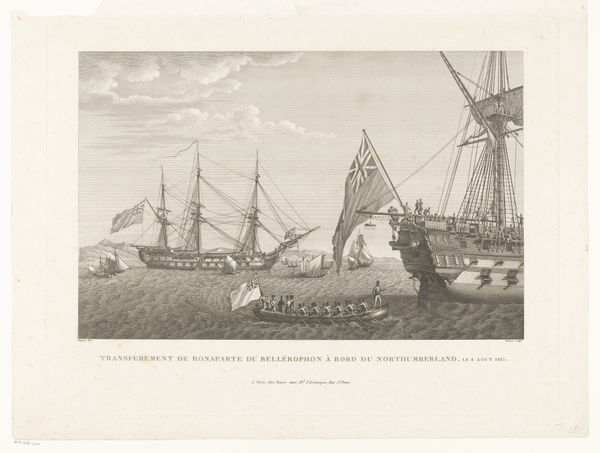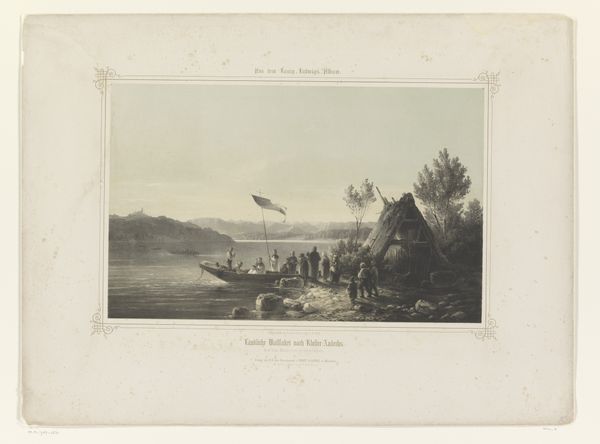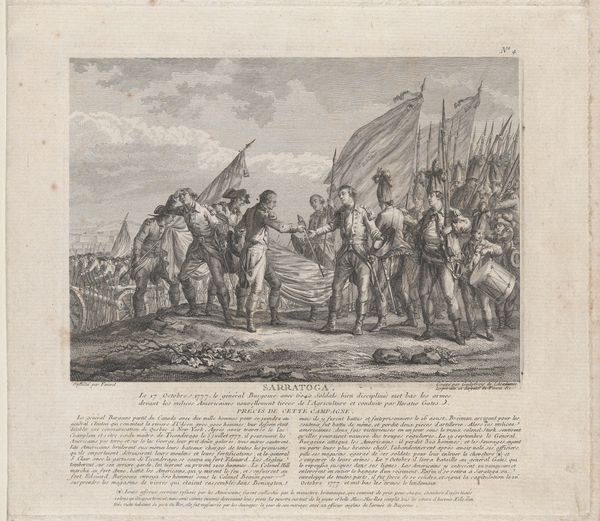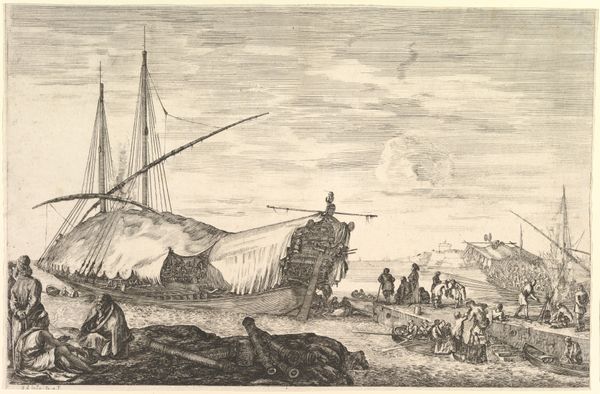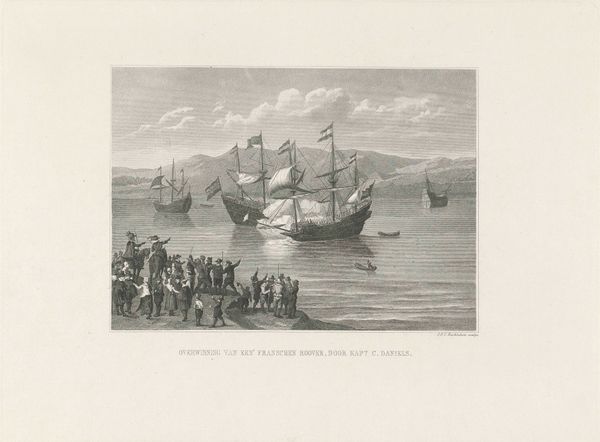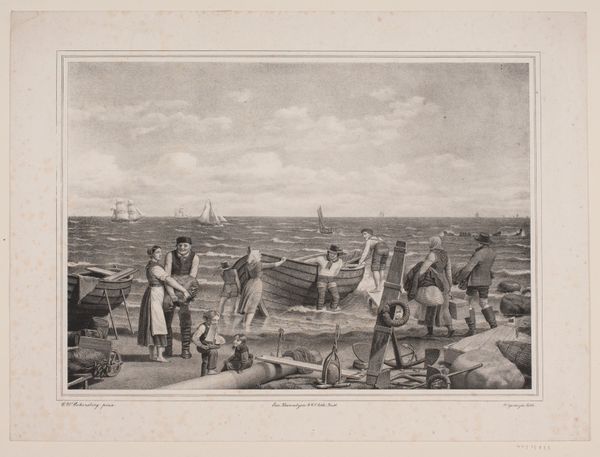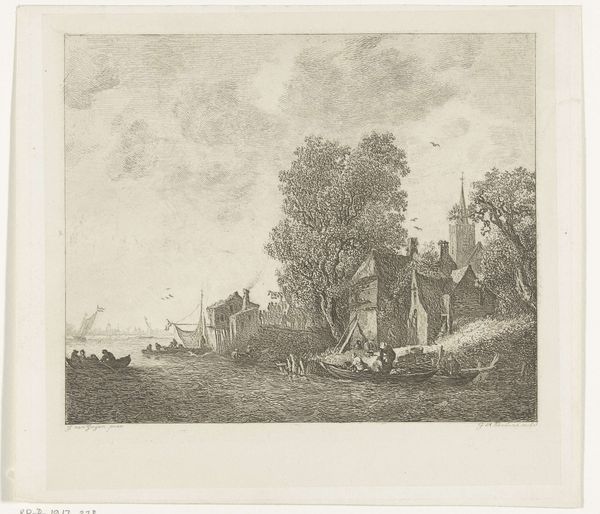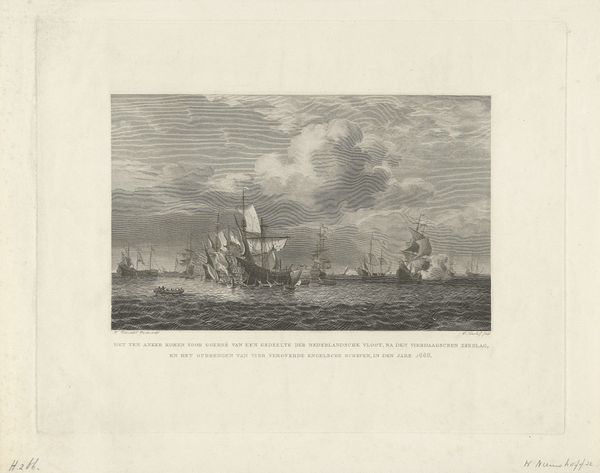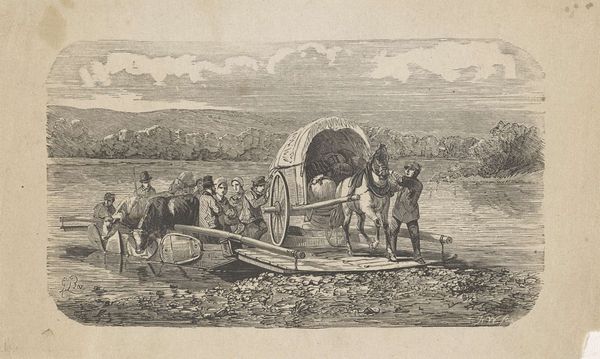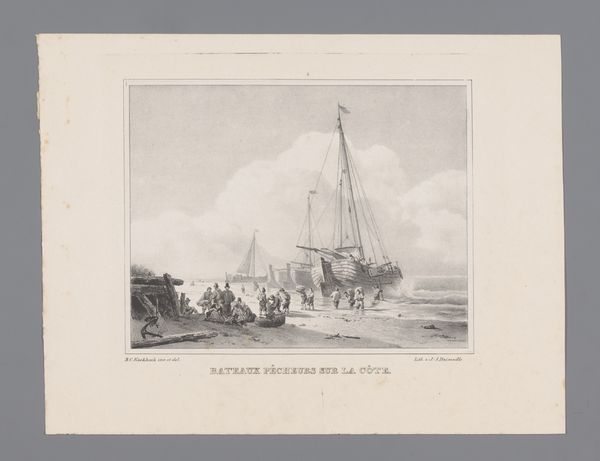
Dimensions: height 390 mm, width 500 mm
Copyright: Rijks Museum: Open Domain
This lithograph by Hendrik Wilhelmus Last, made in 1868, depicts a somber beach scene filled with grieving women. The dominant visual symbol here is grief itself, embodied in the downcast eyes and mournful gestures of the women. These expressions of sorrow echo across time and cultures. We see similar gestures in ancient Roman funerary reliefs, where mourners raise their hands in anguish. Even in Renaissance paintings of the Lamentation, the Virgin Mary embodies this universal grief. Observe the women's posture, how it mirrors the posture of Mary in countless depictions of the crucifixion. This artistic continuity isn't mere coincidence. It's a manifestation of collective memory, a psychological bridge connecting present grief to a shared, historical experience of loss. The image engages us on a subconscious level, tapping into our primal understanding of mourning, a potent symbol that transcends time. The cyclical progression of grief, much like the relentless waves, is thus resurfaced, and has evolved, taking on new meanings in different historical contexts.
Comments
No comments
Be the first to comment and join the conversation on the ultimate creative platform.
